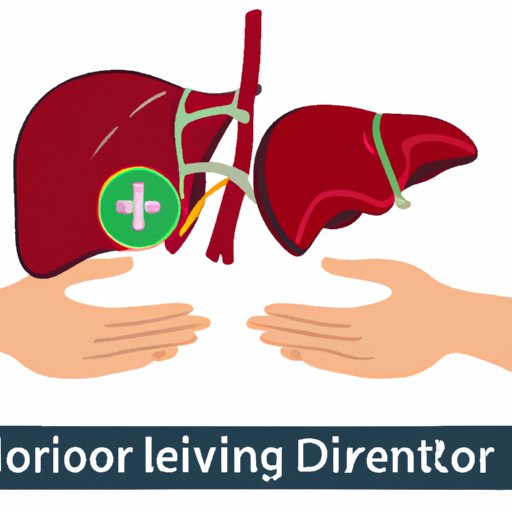
I. Introduction
Living donor liver transplant is a complex surgical procedure that involves removing a portion of a healthy liver from a living donor and transplanting it into a recipient with liver disease. While it can be a lifesaving option for those in need of a liver transplant, it also involves significant risks and is not a decision that should be taken lightly. To make an informed decision about whether to donate part of your liver, it’s essential to educate yourself about the process and understand the potential risks and benefits.
II. The Ultimate Guide to Living Donor Liver Transplants
There are two main types of liver donation: deceased donor liver transplant and living donor liver transplant. While deceased donor transplant involves a liver that has been donated by someone who has died, living donor liver transplant takes a portion of a healthy liver from a living donor, usually a family member or close friend of the recipient.
The science behind living donor liver transplant is sophisticated and involves assessing the size of the donor’s liver and matching it with the recipient’s needs. The surgery process is challenging, involving a complex procedure to remove a portion of the liver, followed by transplanting it into the recipient’s body. Recovery from a living donor liver transplant is a gradual process, and it can take several weeks to months, depending on the donor’s overall health and the extent of the donation.
III. Why I Decided to Donate a Portion of My Liver
Donating a portion of your liver is not an easy decision, but for some, it may be a life-saving one. Katie, a 30-year-old woman who underwent liver transplant surgery to donate a portion of her liver, shared her story about why she chose to donate.
Katie decided to donate a portion of her liver to her uncle, who had been diagnosed with primary sclerosing cholangitis, a chronic liver disease that leads to cirrhosis. She had seen the impact the disease had on her uncle’s life and knew that a liver transplant would be the only option for him. Despite the risks involved, Katie chose to go through with the surgery because she wanted to give her uncle a chance at a better life.
Katie’s experiences throughout the process highlight the importance of educating oneself before considering liver donation. It is essential to understand the risks and benefits that come with this life-changing decision.
IV. Everything You Need to Know About the Risks and Benefits of Donating Part of Your Liver
Before considering living donor liver transplantation, it’s critical to understand the potential risks and benefits involved. This life-changing decision can have significant impacts on your overall health and well-being. One of the most important factors to consider is the recovery time involved. There is a considerable recovery period associated with liver donation, usually taking between six to eight weeks.
Other potential risks to keep in mind include the potential for complications during surgery and long-term impacts on your health. These may include the development of scar tissue, which can cause discomfort and pain, and the risk of developing liver disease later in life.
Despite these risks, there are also significant benefits to living donor liver transplant for both the donor and the recipient. For the recipient, it provides a lifesaving solution to a potentially fatal liver disease. For the donor, it can be a life-changing experience to give someone a second chance at life.
V. Breaking Down the Myths About Living Donor Liver Transplantation
One of the biggest misconceptions surrounding living donor liver transplant is that it is unsafe and risky. However, this is far from the truth. Living donor liver transplant is a safe and effective procedure that has been proven successful in many cases.
Another misconception is that you have to be related to someone to be a living donor. While this is not necessarily the case, it’s likely that the donor will be a family member or a close friend of the recipient. This is because the compatibility of the donor’s liver with the recipient’s needs to be carefully assessed before donation can take place.
VI. Donating Part of Your Liver: What You Need to Know Before You Decide to Donate
Before deciding to donate part of your liver, it’s essential to go through an evaluation process to assess your suitability for the procedure. This will include a series of tests to determine your health status and compatibility with the recipient. The decision to donate will ultimately be up to you, and it’s essential to have a thorough understanding of the risks and benefits before making your decision.
If you do decide to go through with liver donation, it’s crucial to take proper care of yourself post-surgery. This includes getting plenty of rest and avoiding strenuous physical activity for several weeks after surgery.
VII. Conclusion
In conclusion, living donor liver transplant is a lifesaving procedure that can provide a second chance at life for those in need of a liver transplant. However, it’s important to educate oneself about the process and understand the risks and benefits before considering liver donation.
If you’re interested in learning more about living donor liver transplant, there are many resources available online or through healthcare providers. Don’t hesitate to reach out to a healthcare professional or a hospital for more information on how you can make a difference in someone’s life.




